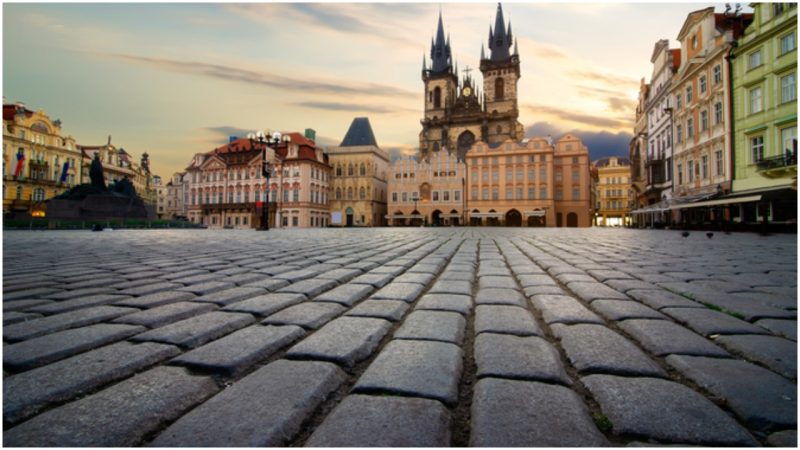Prague, the capital of the Czech Republic, is one of Europe’s great tourist cities. It’s one big UNESCO heritage site of fairytale towers, ornate statues, and art nouveau facades that stir the imagination and conjure up phantoms from its thousand year history at the heart of the Holy Roman Empire and the Austro-Hungarian Empire.
There are phantoms, however, that Prague would rather forget. Beneath the feet of its estimated 3.5 million tourists a year is a story of pain, suffering and genocide that wouldn’t get a second glance as visitors hurry from museum to cafe to boutique hotel and back again.
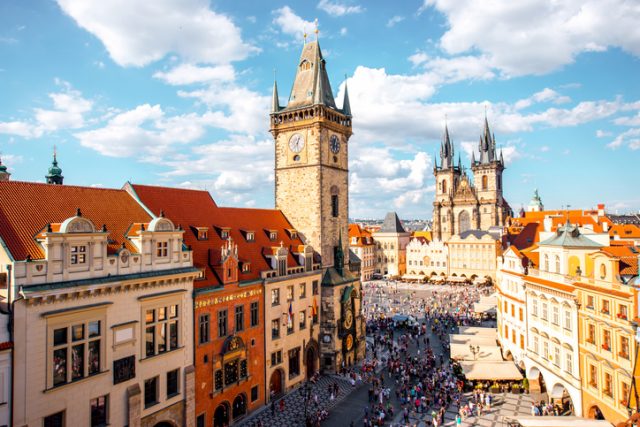
The BBC travelled to Wenceslas Square in Prague’s Old Town to discover the heartbreaking secret of its streets. The shiny square cobbles are crisscrossed by light and dark gray patterns, and during 1987 when Wenceslas Square was being restored ahead of a red carpet visit by Soviet president Mikhail Gorbachev, a passer-by slipped a couple of the replacement stones into his pocket.
Taking the BBC back to the scene three decades on, Leo Pavlat, now the director of the Prague Jewish Museum, took two cobbles from his bag and compared them to the cobbles by his feet — they were identical.
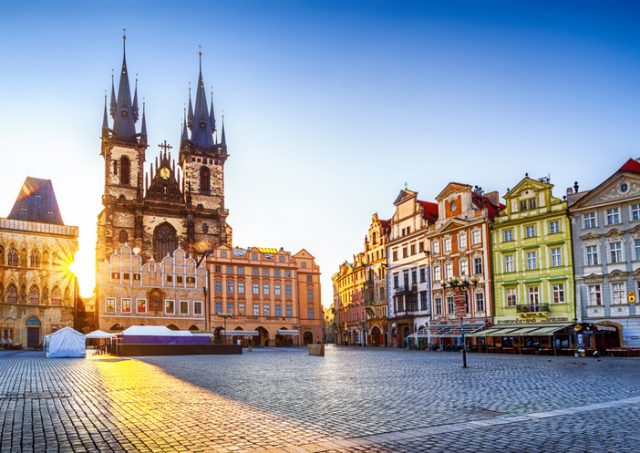
Turning his stones over, Pavlat revealed that the opposite side was a purposefully polished face with visible inscriptions in gold paint: the date “1895” and the Hebrew letters “he”, “vav” and “bet”. It was part of the eulogy written on a Jewish gravestone.
30 years ago when Pavlat had seen the workmen taking fresh stones from a big pile, the inscriptions caught his eye and he realised what he was looking at.
“It wasn’t easy being Jewish back then,” he told the BBC. “I was an active member of the community, though not in the official circles. And I wasn’t a member of the Communist Party.”
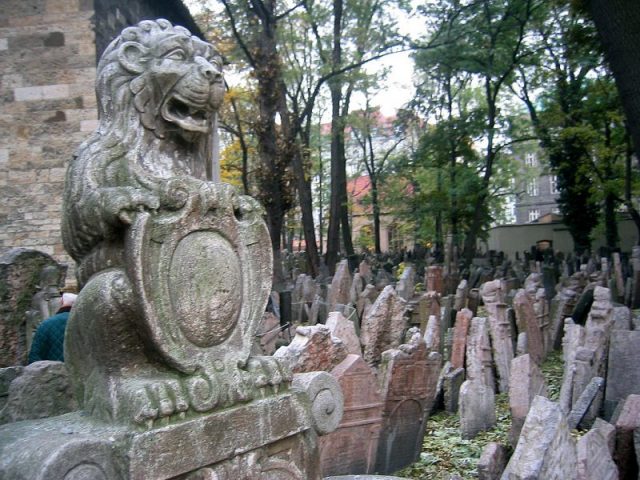
“There were no publications,” continued Pavlat, “no education. I think the regime just wanted the Jewish community to slowly die.”
At the end of the 19th century and beginning of the 20th, Prague was a cosmopolitan city of art, culture and relative harmony. Germans, Czechs, and Jews all lived side by side in the ‘Golden City’ as subjects of the Habsburg emperor. The most famous member of this mixed society was one of the greatest writers of all three categories — German, Jewish and Czech — Franz Kafka.
A thriving Jewish population has been recorded in Prague since the 11th century and, aside from a few oppressive stains on its tolerant Medieval and Early Modern history, the city was a haven in comparison to much of Europe.
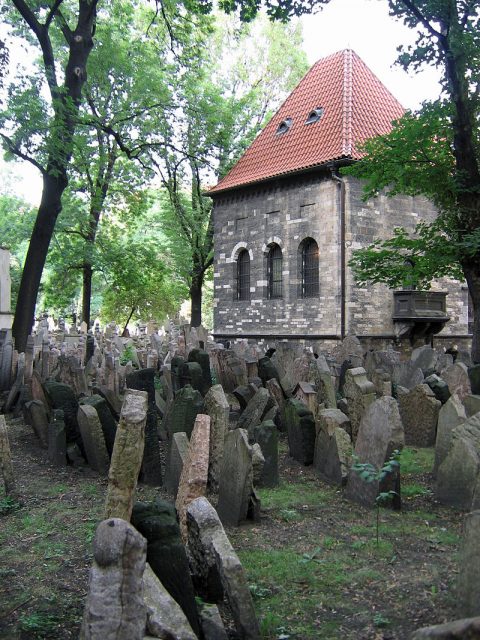
The Jewish Quarter of the Old Town emerged as a Jewish neighbourhood in the 16th century with the influx of Jewish refugees from Moravia (in the east of the modern Czech Republic), Germany, Austria and Spain.
By the early 18th century, a quarter of Prague’s population — an estimate 15,000 people — was Jewish. It was the second largest Jewish community in Europe after Thessaloniki in Greece, and more Ashkenazi Jews called Prague home than any other place in the world.

This wouldn’t last. In 1939 the independent Czechoslovakia was invaded by Nazi Germany and Prague’s Jewish community was at the mercy of Adolf Hitler’s genocidal mania. 20 percent of the city’s population were Jewish — an estimated 92,000 people — and two thirds of them would be murdered in the Holocaust.
In 1945, Czechoslovakia was “liberated” by the Red Army of the Soviet Union, who rebuilt the nation in their own image. Only 15,000 Jews remained in the entire country, and by 1950 half of them had emigrated to Israel to escape the bitter memories of the savage Nazi occupation and the suppression of their culture by the Communist regime.
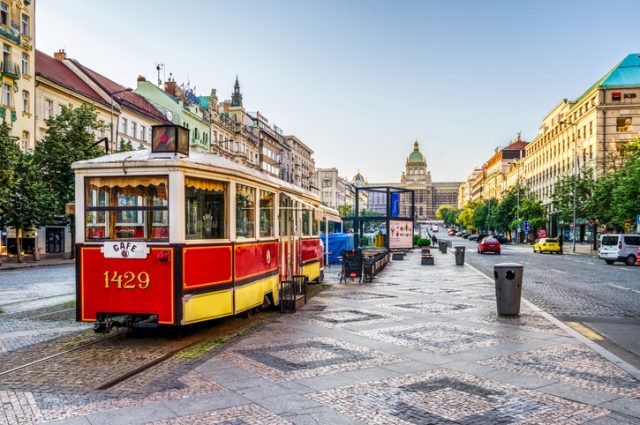
90 synagogues in Czechoslovakia were demolished by the Communist authorities as part of their war on religion. As state anti-Semitism increased under the influence of Soviet dictator Josef Stalin, even Jewish members of the Communist government were persecuted, imprisoned and ejected from the party. The remainder began to keep their Jewish identity a secret.
Jews who worshipped or display their faith were shadowed by the secret police. Talk of the Holocaust was taboo, and survivors were silenced and prevented from sharing their experiences. By the 1980s, roughly only 8,000 Jews still called the country their home.
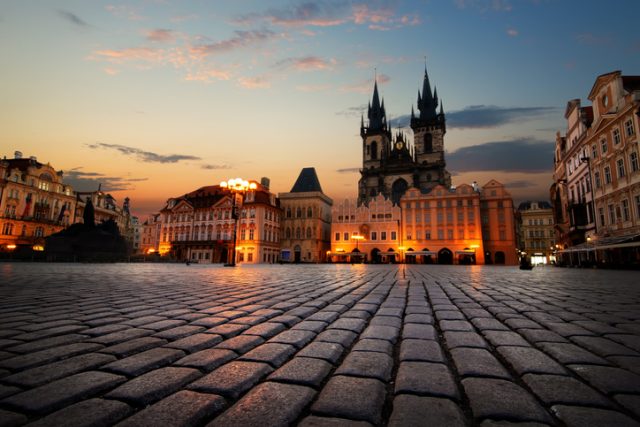
It was during this period that cemeteries were plundered for raw materials by the cash-strapped regime. Leo Pavlat told the BBC that he had traced the cobbles he’d taken to a Jewish cemetery in the town of Udlice in North Bohemia.
Like much of country, it had a thriving population until the 20th century when the twin evils of National Socialism and Communism had first erased the Jewish population, and then erased its memory.
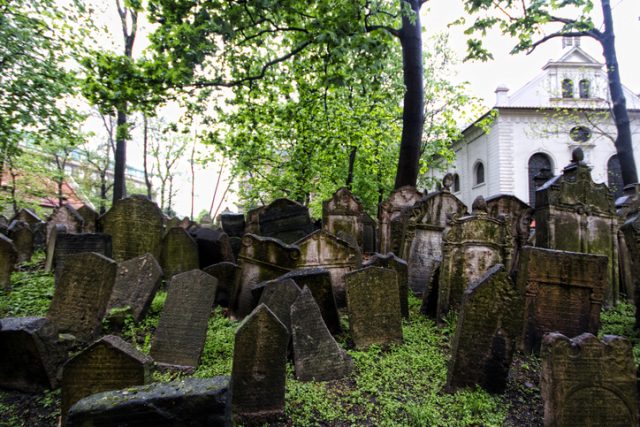
“I don’t think it was done deliberately by the Communists, to offend us Jews,” said Pavlat. “But it is insensitive.”
Since the fall of Communism and the split of Czechoslovakia into two democratic states, the Czech Republic and Slovakia, Prague has begun to celebrate its Jewish heritage openly. The Jewish Quarter, the work of Franz Kafka, and the legend of the Golem are firmly part of its confident new identity, attracting visitors in their millions.
Asked what he wanted the city to do about its streets of the dead, Pavlat replied, “It’s not easy. The gravestones can never be put back together, and laying new cobbles would cost millions.”
Instead, he wants the city to erect a plaque telling tourists the sad story of the lost Jewish communities whose memory now lies forgotten beneath their feet.
